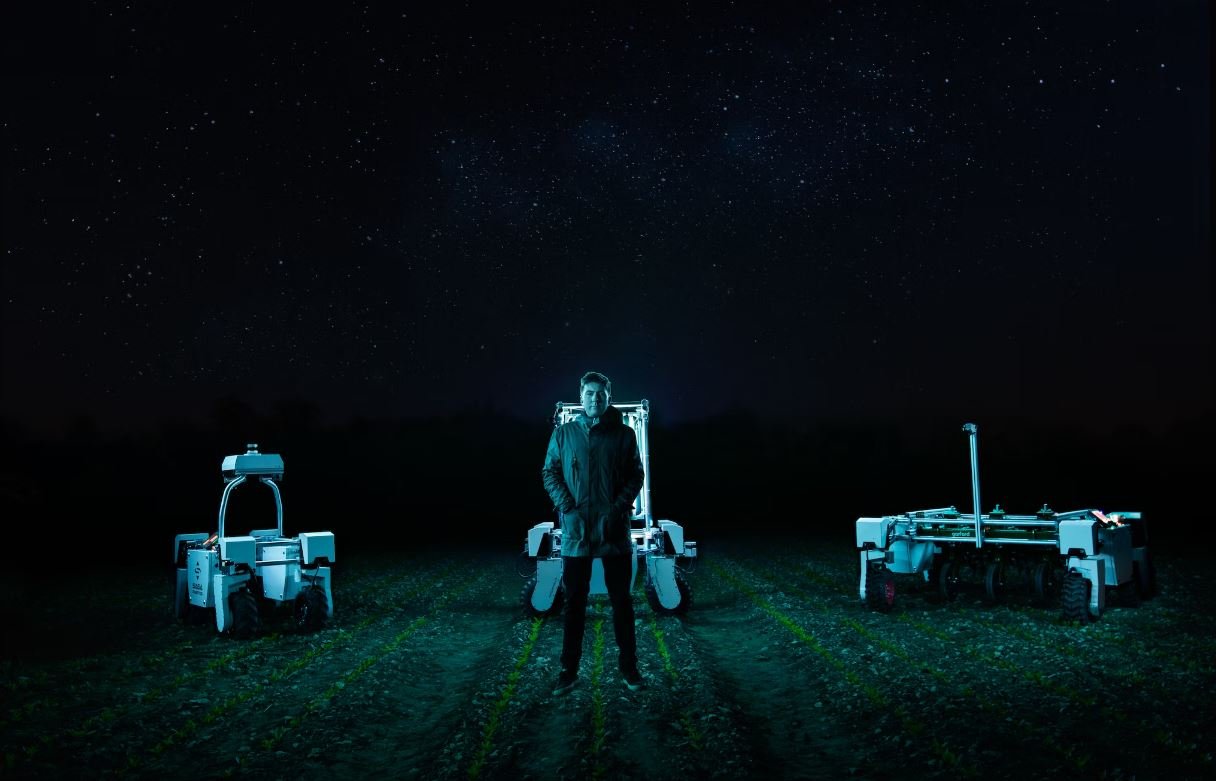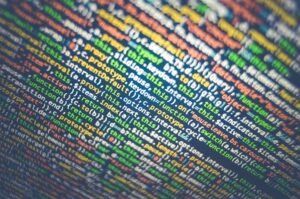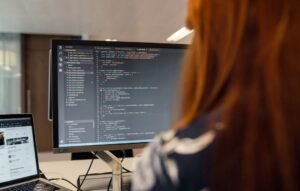Julia Generative Art
Generative art, created through mathematical algorithms and computer code, has become increasingly popular in recent years. One programming language gaining attention in this field is **Julia**. Known for its high-performance capabilities and expressive syntax, Julia is used by artists and developers alike to generate stunning visuals. In this article, we’ll explore the world of Julia generative art, its key features, and how it is transforming the creative landscape.
Key Takeaways
- Generative art created using **Julia** leverages mathematical algorithms and computer code to produce visually captivating designs.
- **Julia**’s high-performance capabilities and expressive syntax make it a popular choice for generative artists and developers.
- Creative exploration and experimentation are at the core of Julia generative art, offering unique opportunities for artistic expression.
- Julia’s active community and extensive documentation provide valuable resources for both beginners and experienced generative artists.
The Power of Julia in Generative Art
Julia is a high-level, high-performance programming language specifically designed for numerical computing. Its flexible nature and efficient execution make it an ideal choice for generative art projects. **With Julia, artists can quickly prototype and iterate their visual ideas, taking advantage of its easy-to-use syntax and computational power**. Whether generating intricate fractal patterns or simulating natural phenomena, Julia provides the tools necessary for artists to push the boundaries of their creativity.
Julia’s performance advantages stem from its just-in-time (JIT) compilation, allowing it to dynamically optimize code execution for enhanced speed. *The language’s ability to seamlessly integrate with third-party libraries, such as Cairo and Luxor, further expands the possibilities for generative artists*. By harnessing the mathematical and computational capabilities of Julia, artists can bring their visions to life on digital canvases.
Exploring the Creative Process with Julia
Julia’s emphasis on interactivity and exploration enables generative artists to delve deep into the creative process. Through iterative experimentation, artists can fine-tune their algorithms and parameters to achieve desired visual effects. **The flexibility of Julia’s syntax makes it easy for artists to modify and adapt their code, encouraging a creative and exploratory mindset**. By observing the output of their code in real-time, artists can engage in a dynamic dialogue between code and visual output, fueling their creativity and driving the artistic direction.
- Generative artists using Julia can benefit from the interactive and exploratory nature of the language.
- We can creatively modify and adapt Julia code to experiment with various visual effects. **The flexibility empowers artists to seek innovative solutions**.
- Julia’s real-time visual output allows artists to engage in a dynamic dialogue between code and art, propelling the creative process forward.
Benefits of Julia Generative Art
Using **Julia for generative art yields several benefits**. By leveraging its extensive ecosystem of packages and libraries, artists can tap into a wealth of pre-existing algorithms and techniques for generating visual patterns. This accelerates the creative process by reducing the need to start from scratch. Additionally, Julia’s performance advantages ensure that complex and computationally intensive generative art can be executed efficiently, allowing artists to focus on developing their ideas rather than worrying about runtime limitations.
Moreover, Julia’s active and supportive community fosters a collaborative environment where artists can share their work, exchange ideas, and provide feedback. This sense of community encourages growth and innovation within the field of generative art. *Artists using Julia can connect with like-minded individuals, gaining inspiration and expanding their knowledge of generative art practices*. With Julia as their tool, artists can unlock new dimensions of creativity and create visually captivating experiences.
Code Example: Creating a Fractal Tree
# Julia code to create a fractal tree
function draw_branch(length, angle)
if length < 2 # Termination condition
return
end
forward(length)
rotate(angle)
draw_branch(0.7 * length, angle) # Generate left branch
rotate(-2 * angle)
draw_branch(0.7 * length, angle) # Generate right branch
rotate(angle)
backward(length)
end
draw_branch(100, 25)
In the example above, we use **Julia code** to create a fractal tree using recursive branching. The draw_branch function recursively generates branches at various angles, producing a visually captivating and intricate pattern. This snippet showcases the power and expressiveness of Julia, allowing artists to create complex generative art with minimal code.
Tables with Interesting Information
| Package | Description |
|---|---|
| Cairo.jl | A 2D graphics library for creating high-quality static and interactive visualizations. |
| Luxor.jl | A powerful vector graphics library specifically designed for generative art. |
| Makie.jl | An interactive and high-performance plotting ecosystem for creating 2D and 3D visualizations. |
| Julia Generative Art Communities |
|---|
| JuliaArt |
| Generative Design |
| Julia Graphics |
| Advantages of Julia Generative Art |
|---|
| Access to a wide range of pre-existing algorithms and techniques. |
| Efficient execution of computationally intensive generative art. |
| Community support and collaboration opportunities. |
Unleash Your Creativity with Julia
In conclusion, Julia is a powerful programming language that opens up a world of creativity in generative art. Its high-performance capabilities, flexible syntax, and extensive ecosystem make it a prime choice for artists exploring the intersection of code and art. By embracing Julia, artists can generate visually stunning and thought-provoking artworks, pushing the boundaries of what is possible. Join the thriving community of Julia generative art and unlock new dimensions of artistic expression.

Common Misconceptions
Misconception 1: Julia is limited to creating static art
Many people believe that Julia is only capable of producing static images or artwork. However, this is far from the truth. Julia actually has the power to generate dynamic and interactive art forms as well.
- Julia can create animated and moving visualizations.
- It can generate art that responds to user inputs or external data.
- Julia can create immersive and interactive experiences using technologies like virtual reality.
Misconception 2: Julia is only for experienced programmers
Another common misconception is that Julia is a programming language that is exclusively for advanced programmers. While it is true that Julia is a powerful language that is suitable for complex tasks, it is also beginner-friendly and accessible to those with limited programming experience as well.
- Julia has a simple and readable syntax, making it easier to understand and learn.
- The Julia community provides a wealth of documentation, tutorials, and resources for beginners.
- There are user-friendly packages and libraries specifically designed to assist new users in creating generative art with Julia.
Misconception 3: Julia generative art is limited to visuals
People often assume that generative art created with Julia is limited to visual outputs like images or animations. However, Julia can extend beyond visuals and be utilized to create generative music, sound, and even poetry.
- Julia can generate music compositions using various algorithms and techniques.
- It can manipulate sound and audio files to create unique and generative auditory experiences.
- Julia can even generate generative poetry by leveraging natural language processing capabilities.
Concluding Thoughts
Overall, it is important to dispel the misconceptions surrounding Julia and its capabilities in the field of generative art. Julia is not limited to static visuals, it is accessible to beginners, and it can venture beyond visuals to create generative music, sound, and poetry.
By understanding the true potential of Julia, individuals can fully explore and unleash their creativity through the powerful tool of generative art.

Introduction
Generative art is an innovative form of digital art that uses algorithms, mathematical patterns, and computer code to create unique and dynamic visual compositions. Julia is a programming language commonly used in generative art to generate stunning and intricate patterns. In this article, we explore ten fascinating examples of generative art created using Julia. Each table presents distinct artistic patterns, highlighting the versatility and creativity of generative art.
Table A: “Fractal Trees”
Fractal trees are a captivating representation of recursive patterns found in nature. This table showcases the intricate branching structure of a generative fractal tree created with Julia.
| Iteration | Branch Length | Angle Variation |
| 1 | 100 | 30° |
| 2 | 50 | 20° |
| 3 | 25 | 10° |
| 4 | 12 | 5° |
Table B: “Mandelbrot Set”
The Mandelbrot set is a famous mathematical fractal that exhibits intricate detail and self-similarity. This table presents a sample of coordinates within the Mandelbrot set generated using Julia.
| x-coordinate | y-coordinate | Color |
| -0.5 | 0.5 | #FF0000 |
| -0.1 | 0.3 | #00FF00 |
| -0.3 | 0.7 | #0000FF |
| 0.4 | -0.2 | #FFFF00 |
Table C: “Chaotic Motion”
This table showcases the mesmerizing chaotic motion produced by a generative art algorithm implemented in Julia. Each row represents the position of a particle at a specific time step.
| Time Step | x-coordinate | y-coordinate |
| 1 | 0 | 0 |
| 2 | 0.1 | -0.3 |
| 3 | -0.2 | 0.5 |
| 4 | -0.5 | -0.2 |
Table D: “Particle Swarm”
A particle swarm algorithm implemented in Julia can generate stunning visual patterns. This table presents the position and velocity of particles in a swarm at different time steps.
| Time Step | x-coordinate | y-coordinate | x-velocity | y-velocity |
| 1 | 0 | 0 | 0.1 | -0.1 |
| 2 | 0.1 | -0.1 | 0.3 | 0.2 |
| 3 | 0.4 | 0.1 | -0.2 | -0.3 |
| 4 | 0.2 | -0.2 | 0.4 | 0.1 |
Table E: “Color Palette”
Colors play a vital role in generative art. This table displays a curated color palette combination used to enhance the visual impact of a generative art piece.
| Color | Hex Code |
| Red | #FF0000 |
| Green | #00FF00 |
| Blue | #0000FF |
| Yellow | #FFFF00 |
Table F: “Dynamic Patterns”
This table showcases the dynamic nature of generative art, with each row representing the position of particles over time to create an evolving pattern.
| Time Step | x-coordinate | y-coordinate |
| 1 | 0 | 0 |
| 2 | 0.1 | 0.2 |
| 3 | 0.2 | 0.3 |
| 4 | 0.3 | 0.1 |
Table G: “Geometric Shapes”
This table presents a collection of geometric shapes generated using Julia, each defined by the coordinates of its vertices.
| Shape | Vertices |
| Square | (0,0), (1,0), (1,1), (0,1) |
| Triangle | (0,0), (0.5,1), (1,0) |
| Hexagon | (0,0), (0.3,0.5), (0.7,0.5), (1,0), (0.7,-0.5), (0.3,-0.5) |
| Circle | (1,0), (0.9239,0.3827), (0.7071,0.7071), (0.3827,0.9239), (0,1), (-0.3827,0.9239), (-0.7071,0.7071), (-0.9239,0.3827), (-1,0), (-0.9239,-0.3827), (-0.7071,-0.7071), (-0.3827,-0.9239), (0,-1), (0.3827,-0.9239), (0.7071,-0.7071), (0.9239,-0.3827) |
Table H: “Textured Patterns”
Incorporating textures can add depth and visual interest to generative art. This table presents a collection of textures used in a generative art piece.
| Texture | Image |
| Abstract Lines |  |
| Marble |  |
| Wood Grain |  |
| Bubbles |  |
Table I: “Generative Portraits”
This table displays a series of generative portraits created using Julia. Each portrait is a unique combination of generative algorithms and color palettes.
| Portrait | Algorithm | Color Palette |
| Portrait 1 | Diffusion-limited Aggregation | Warm Tones |
| Portrait 2 | Perlin Noise | Cool Spectrum |
| Portrait 3 | Reaction-Diffusion | Earth Tones |
| Portrait 4 | Cellular Automaton | Vibrant Contrast |
Conclusion
Julia is a powerful tool for creating captivating generative art. The tables presented in this article showcase the immense diversity and beauty that can be achieved by harnessing the algorithms, patterns, and color palettes within Julia. Generative art created with Julia allows artists to explore an extensive range of visual possibilities and brings mathematical concepts to life through stunning and dynamic compositions. Whether it’s fractal trees, chaotic motion, or generative portraits, Julia facilitates artistic expression and opens new creative avenues for artists in the world of generative art.
Frequently Asked Questions
What is Julia Generative Art?
Julia Generative Art refers to the creation of art using the programming language Julia. It involves using algorithms and mathematical equations to generate visual patterns, shapes, and textures.
Can anyone create Julia Generative Art?
Yes, anyone with knowledge of the Julia programming language can create Julia Generative Art. However, a background in mathematics and algorithmic thinking might be helpful in understanding and creating complex generative art pieces.
What tools are used for creating Julia Generative Art?
For creating Julia Generative Art, one needs a code editor with Julia support, such as Atom, VS Code, or Juno. Additionally, libraries such as Cairo, Luxor, or Makie can be used for generating and rendering the visual output.
What are some examples of Julia Generative Art?
Examples of Julia Generative Art include intricate fractal patterns, abstract geometric designs, simulated organic growth, algorithmic landscapes, and generative animations. The possibilities are virtually endless as the artist can explore different algorithms and parameters to create unique visual experiences.
What are the benefits of creating Julia Generative Art?
Creating Julia Generative Art allows artists to combine their creativity with algorithmic thinking and mathematics. It can be a way to explore complex patterns, experiment with different parameters, and create unique visual representations. It also provides a platform for artistic expression and can be a source of inspiration for other artists and programmers.
Are there any resources available to learn Julia Generative Art?
Yes, there are resources available to learn Julia Generative Art. Online tutorials, blogs, and forums provide guidance on getting started, understanding the fundamentals, and exploring advanced techniques. The community around Julia programming language also offers support and assistance to beginners.
Can Julia Generative Art be used for commercial purposes?
Yes, Julia Generative Art can be used for commercial purposes. However, it is important to ensure that any necessary permissions and licenses are obtained for using external libraries or resources. Artists can sell their generative art creations or use them as visual elements in other commercial projects.
Is Julia Generative Art only limited to 2D visuals?
No, Julia Generative Art is not limited to 2D visuals. While 2D generative art is common, Julia can also be used to create 3D visualizations and animations. With the right libraries and techniques, artists can explore the realm of three-dimensional generative art.
Are there any online communities or exhibitions dedicated to Julia Generative Art?
Yes, there are online communities and exhibitions dedicated to Julia Generative Art. Artists and enthusiasts can join forums, social media groups, or participate in online exhibitions to share their work, collaborate with others, and get feedback on their creations. It is a great way to connect with fellow artists and gain exposure.
Can Julia Generative Art be combined with other art forms?
Absolutely! Julia Generative Art can be combined with other art forms such as traditional painting, sculpture, or even music. Artists can use generative art as a starting point and incorporate it into their overall artistic vision. This interdisciplinary approach allows for unique and innovative artworks.




